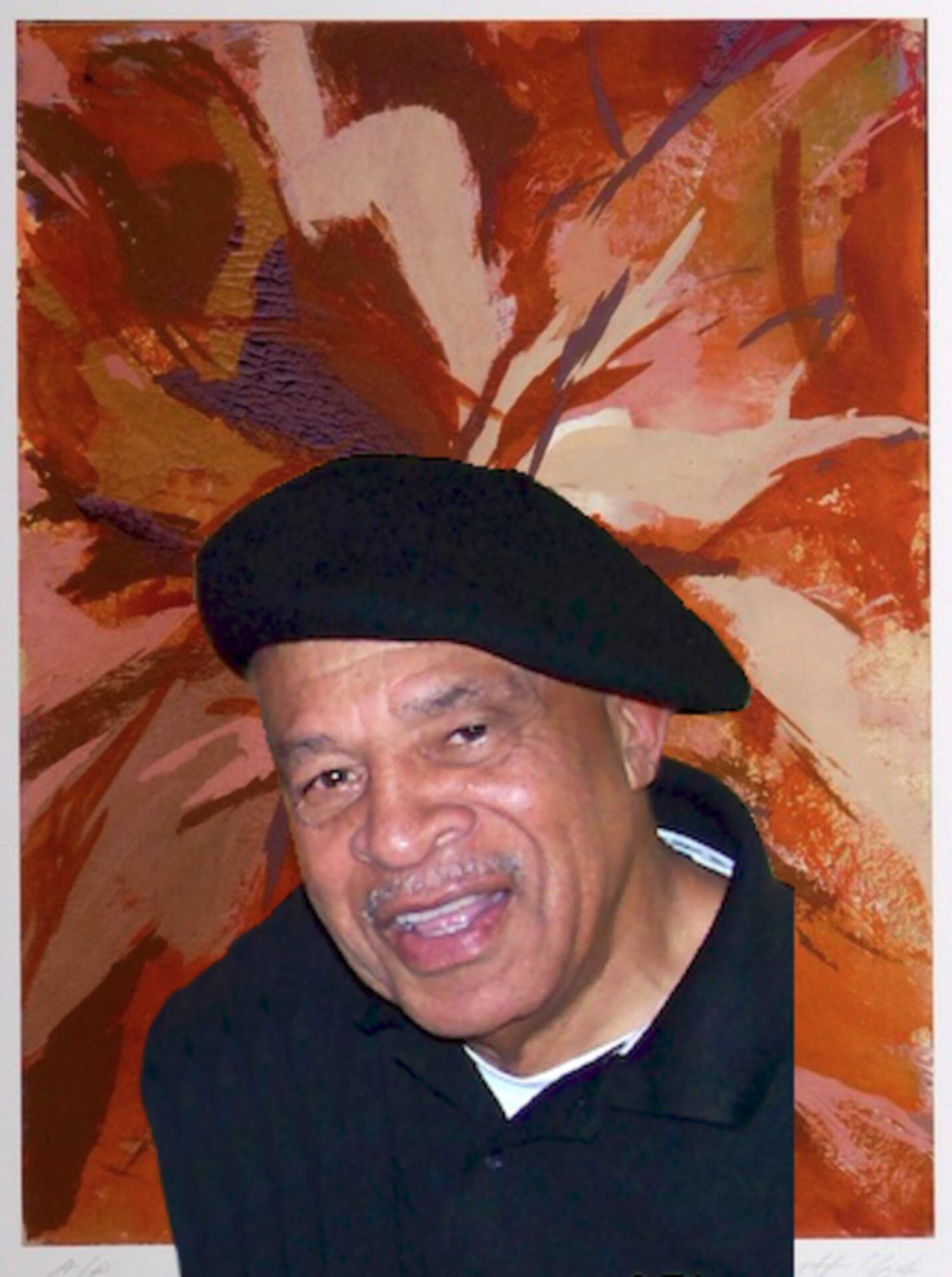Clarence Scott
b. 1936
American
Born: Buffalo, NY, US
An eclectic artist with an unrestricted chosen medium, Clarence Scott enjoys the freedom of immersion wherever his spirit leads him. Life challenges can hinder and stall creativity. However, with a persevering will, and a rebirthing creative spirit, he never allows his artistic thirst to get smothered. Like many emerging artists, he is still evolving in fine arts after some life-changing obstacles. Much of his work is self-driven by a coveting spirit for creativity. Augmented, he credits his late wife, Madeleine Swidler Scott, as his principal encourager over the last four decades, noting “She just wanted me to go for it!”
Born in Buffalo, New York, Scott graduated from Buffalo Technical High School (now Hutchinson Central Technical High School) majoring in Advertising Arts. After serving four years in the Navy, Scott obtained AAS and BFA degrees in Communication Design at the State University of New York at Buffalo. He enrolled in an evening drawing class at the University at Buffalo instructed by Don Nichols. Unexpectedly, two devoted invigilators, the late Robert "Bob" Walker, his university counselor, and his wife Peggy Walker (a multi-talented artist), whom he had befriended at Tri-Graphics, provided some academic guidance. From this collaboration, Walker guided him into the Communication Design degree program. The chair of the university’s art department was Philip Elliott.
In Scott’s first daytime art class, which was taught by Harvey Breverman, he established a friendship with Jim Pappas, having art, jazz, sports, and family as a common bond. Reflecting on the time he notes:
I have always been open to learning, even from my own children. Pappas has artistic knowledge I did not have, and I was aware of that fact. I started to observe his work, other students’ work, and became aware of art periodicals that I didn’t even know existed! I became a risk-taker in artistic conceptualization. It’s pure joy when I lose myself in an artistic endeavor. It’s a personal and spiritual experience, and The Spirit is willingly supportive if we allow this being to enter into our domain. It’s an enlightenment!
During those years of study, Scott recalls faculty members Don Nichols, Joel Reardon, and Harvey Breverman as sources of constant motivation and inspiration. For this BFA thesis project, he produced a twenty-minute Super 8 film titled “Design and the Division of Space,” challenging himself in an area he had never pursued.
Upon completion of his degree programs, Scott accepted a managerial position in the graphic arts printing sector at Arcata Graphics – printer of Reader’s Digest, Life, and Essence magazines, as well as numerous pocketbooks and inserts. He gained knowledge in the administrative and production aspects of commercial printing and became the supervisor of the Typographics Department at UB.
Additionally, Scott is a founding member of the Langston Hughes Center for the Visual and Performing Arts. Originally named APS, Inc. for founding members Allie Anderson, Jim Pappas, and Clarence Scott, the group launched an Experimental Arts Pilot Program funded by the New York State Council on the Arts (NYSCA). Scott and Pappas were the art instructors for the experimental program.
Reflecting on the experience, Scott says, “Following the success of that pilot program, I will never forget those words of Don Harper, NYSCA Expansion Programs Coordinator, as he viewed onsite our student’s exhibition at the end of the pilot program. He said, ‘Keep it going!! This is the best thing in the state!!’” The program’s success preceded and assisted in the growth of the Langston Hughes Center, which opened at its permanent location at High St. in 1971 and greatly expanded its offerings of art classes for the community.
In 1975, Scott relocated to the West Coast, accepting the Senior Graphics Coordinator position at Grossmont College. He developed and taught the initial graphic design courses at Grossmont and Cuyamaca Colleges. The change of environment offered him the privilege to merge fine arts and graphic design. Scott began experimenting with etching, silkscreen, and photography. He’s exhibited his work at the San Diego Art Institute, Monterey Jazz Festivals, and Albright Knox Art Gallery. His work is also in private collections. Scott was an active member of the Bunker Hill Arts League based in Los Angeles, whose members included Charles Bibbs, Wong Shue, Varnette Honeywood, and Ernie Barnes.
Bio courtesy of the artist
